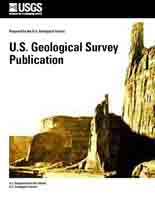 Introduction Introduction
The National Geochronological Data Base (NGDB) was established by the United States Geological Survey (USGS) to collect and organize published isotopic (also known as radiometric) ages of rocks in the United States. The NGDB (originally known as the Radioactive Age Data Base, RADB) was started in 1974. A committee appointed by the Director of the USGS was given the mission to investigate the feasibility of compiling the published radiometric ages for the United States into a computerized data bank for ready access by the user community. A successful pilot program, which was conducted in 1975 and 1976 for the State of Wyoming, led to a decision to proceed with the compilation of the entire United States.
For each dated rock sample reported in published literature, a record containing information on sample location, rock description, analytical data, age, interpretation, and literature citation was constructed and included in the NGDB. The NGDB was originally constructed and maintained on a mainframe computer, and later converted to a Helix Express relational database maintained on an Apple Macintosh desktop computer. The NGDB and a program to search the data files were published and distributed on Compact Disc-Read Only Memory (CD-ROM) in standard ISO 9660 format as USGS Digital Data Series DDS-14 (Zartman and others, 1995). As of May 1994, the NGDB consisted of more than 18,000 records containing over 30,000 individual ages, which is believed to represent approximately one-half the number of ages published for the United States through 1991.
Because the organizational unit responsible for maintaining the database was abolished in 1996, and because we wanted to provide the data in more usable formats, we have reformatted the data, checked and edited the information in some records, and provided this online version of the NGDB.
This report describes the changes made to the data and formats, and provides instructions for the use of the database in geographic information system (GIS) applications. The data are provided in .mdb (Microsoft Access), .xls (Microsoft Excel), and .txt (tab-separated value) formats. We also provide a single non-relational file that contains a subset of the data for ease of use.
|
First posted July 7, 2003
- Complete digital package ZIP (16 MB)
The data are provided in .mdb (Microsoft Access), .xls (Microsoft Excel), and .txt (tab-separated value) formats. A single non-relational file that contains a subset of the data for ease of use is also provided.
Part or all of this report is presented in Portable Document Format (PDF). For best results viewing and printing PDF documents, it is recommended that you download the documents to your computer and open them with Adobe Reader. PDF documents opened from your browser may not display or print as intended. Download the latest version of Adobe Reader, free of charge.
|